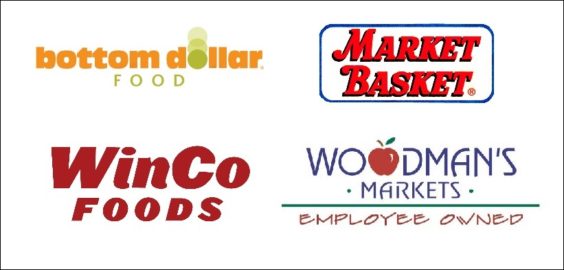
Judging by Walmart’s ubiquitous “Walmart Challenge” commercials, in which shoppers are challenged to bring their supermarket receipts to Walmart to see how much they could have saved on the same items, you’d think that Walmart’s grocery prices simply cannot be beat. That’s the whole idea of the ad campaign, after all. But there’s a reason some stores are never called out by name in Walmart’s commercials. In a head-to-head price matchup, Walmart sometimes loses – because several of its competitors’ prices are consistently lower.
That’s one of the takeaways from a series of price surveys conducted by a nonprofit consumer group. The Center for the Study of Services’ “Consumers’ CHECKBOOK” publication compared prices at grocery chains in seven U.S. metro areas, and found that stores in four out of seven of those cities beat Walmart on price.
So much for the Walmart Challenge.
During a one-week period in each city, undercover shoppers checked the prices of 151 items at all area grocery, supercenter and discount stores, including national-brand products, fresh produce, meat and dairy products. In just about every city, Whole Foods Market had the highest prices. Walmart’s prices were among the lowest. But they were not always the lowest of all.
In the Boston area, DeMoulas Market Basket’s prices averaged 1% less than Walmart’s. In Chicagoland, Woodman’s Market beat Walmart by 2%. In the San Francisco Bay area, Winco beat Walmart by 2% as well. And in the Philadelphia region, Bottom Dollar Food beat Walmart by a full 4%.
Consumers’ CHECKBOOK says a typical Philly family could save $1,400 a year on their grocery bill by shopping at Walmart instead of at the region’s traditional grocery chains. But the “typical” family is apparently one that buys most things at full price, since the mere one-week price survey can’t take into account the grocery chains’ weekly sales that often undercut Walmart’s everyday low prices, not to mention perks like double coupons that Walmart doesn’t offer.
So the real surprise is not that Walmart beats most traditional grocery chains on price, but the fact that the “typical family” could save $300 more, for a total of $1,700 savings per year, by opting for Bottom Dollar’s everyday low prices over Walmart’s.
Perhaps Walmart will think twice before inviting Market Basket, Woodman’s, Winco or Bottom Dollar shoppers to “bring in the receipt from your usual grocery store the next time you shop at Walmart, to see for yourself how much you could save.”
Considering that major national grocery chains like Kroger and Safeway are regularly hammered in Walmart’s price-comparison ads, how can these much smaller, regional chains afford to beat Walmart on price?
It seems bigger isn’t always better.
“As an employee owned corporation, Woodman’s is extremely cost conscious,” the Wisconsin-based chain boasts. “The savings gained by avoiding ongoing interest payments and long-term debt are passed on to you, our valued customer, through our every day low prices.” Like Aldi, Woodman’s also doesn’t accept credit cards, to avoid passing along processing fees.
Massachusetts’ Market Basket is also privately-held, as is Idaho-based Winco, which declares itself “The Supermarket Low Price Leader” and tells customers that it’s “passionate about saving you money.”
And while Bottom Dollar is owned by Delhaize, the parent company of traditional supermarkets like Food Lion and Hannaford, it operates like a supermarket-sized Aldi – products are often displayed in the crates they were shipped in, customers bag their own groceries, and they pay a quarter for the privilege of using a shopping cart.
Low prices alone don’t make for a great customer experience, though. All four discount chains ranked below some full-service, higher-priced competitors in customer surveys conducted by Consumers’ CHECKBOOK. Only 24% of respondents in the Bay Area rated Winco “superior” in the quality of its fresh produce, for example. And only 20% said Bottom Dollar had a “superior” variety of products. Still, they managed to beat out Walmart in most categories.
As for non-full-service, non-Walmart fan favorites like Aldi and Trader Joe’s, Consumers’ CHECKBOOK noted that while their prices are good, their selection leaves something to be desired. “Unfortunately, many Trader Joe’s and Aldi shoppers will also have to visit conventional supermarkets,” the researchers concluded, noting that most locations only carried about a third of the items included in the price survey.
In an attempt to deflect the impact of Walmart’s price-comparison ads, many of Walmart’s competitors have insisted that price isn’t everything. But given the results of these surveys, Bottom Dollar, Market Basket, Winco and Woodman’s would more than likely be happy to take the Walmart Challenge.
Then, Walmart may be the one trying to argue that price isn’t everything.















